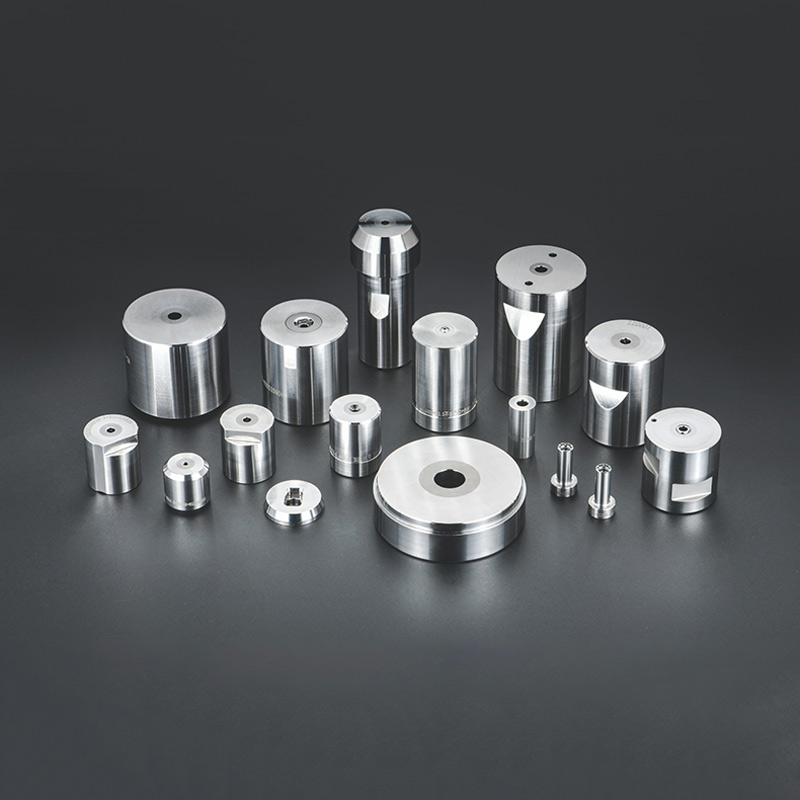Tungsten Carbide Dies are essential tools in manufacturing industries such as wire drawing, cold heading, tube forming, and metal extrusion. Known for their exceptional hardness, wear resistance, and durability, Carbide Dies enable precise shaping of metals and alloys under extreme pressures. This article provides a step-by-step explanation of how to make Tungsten Carbide Dies, as well as tips on maintenance and polishing for extended service life.

1. Understanding Tungsten Carbide Dies
Tungsten Carbide Dies are made from a combination of tungsten carbide powder and a metallic binder, typically cobalt or nickel. This composition offers superior hardness (over 90 HRA) and excellent resistance to abrasion and deformation, making them ideal for high-volume industrial production. Compared to conventional steel dies, Carbide Dies last significantly longer and maintain dimensional accuracy even under high stress.
2. Raw Material Preparation
The first step in how to make tungsten carbide dies is preparing the right powder blend:
Tungsten Carbide (WC) Powder – Provides hardness and wear resistance.
Cobalt or Nickel Binder – Adds toughness and improves bonding.
Carbon Content Adjustment – Ensures proper grain growth and prevents brittleness.
The powders are carefully measured and mixed in a ball mill for uniform particle distribution.
3. Pressing and Forming the Green Compact
The mixed powder is pressed into the desired shape using a steel mold. This “green compact” is fragile and must be handled carefully before sintering. Some dies are formed through cold isostatic pressing to achieve uniform density.
4. Sintering Process
Sintering is the critical step that turns the pressed powder into a solid, high-density Carbide Die. The green compact is heated in a vacuum or hydrogen atmosphere at around 1,350–1,450°C. During this process:
The binder melts and bonds the tungsten carbide grains.
The density and hardness increase significantly.
Dimensional shrinkage occurs, which must be compensated for during pressing.
5. Machining and Grinding
After sintering, Tungsten Carbide Dies are extremely hard and can only be machined using diamond tools or electrical discharge machining (EDM). Common post-sintering processes include:
Bore grinding for precise diameter control.
OD grinding for outer shape finishing.
EDM drilling for complex profiles.
6. How to Polish Tungsten Carbide Dies
A critical step in die manufacturing is surface finishing. Learning how to polish tungsten carbide dies is essential for reducing friction and improving product quality. This process usually involves:
Using diamond paste of progressively finer grit.
Employing ultrasonic polishing machines or manual lapping tools.
Ensuring a mirror-like finish to enhance wear resistance and reduce metal adhesion.
The same techniques apply when learning how to polish carbide dies in general. Proper polishing minimizes surface defects, reduces drawing force, and extends die life.
7. Quality Inspection
Before shipment, Carbide Dies undergo strict inspection to ensure they meet required tolerances and surface roughness standards. Common checks include:
Dimensional measurement with precision instruments.
Surface finish evaluation using profilometers.
Hardness testing to verify material properties.
8. Maintenance Tips
To maximize the service life of Tungsten Carbide Dies:
Clean dies regularly to prevent material build-up.
Store in a dry, dust-free environment.
Re-polish as needed to maintain a smooth working surface.
Replace worn dies promptly to avoid damaging production equipment.
Knowing how to make tungsten carbide dies involves mastering material selection, powder preparation, pressing, sintering, machining, and polishing. Whether you are learning how to polish tungsten carbide dies for improved surface quality or exploring general how to polish carbide dies techniques, proper manufacturing and maintenance ensure longer die life, higher production efficiency, and consistent product quality. With their unmatched durability and performance, Tungsten Carbide Dies remain the preferred choice for demanding industrial applications worldwide.











